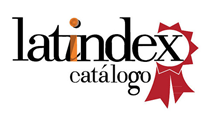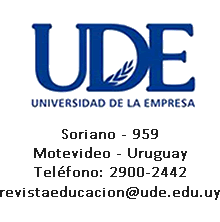The gender relationship in the identification of High Abilities/Giftedness in the school context
DOI:
https://doi.org/10.47966/avan-inv.2024.11162-75Keywords:
altas habilidades, superdotação, gênero, identificaçãoAbstract
Aiming to understand the relationship between gender and the identification of students with High Ability/Giftedness (HA/G) indicators, this article brings some theoretical reflections on HA/G, gender culture and the identification of students with HA/G, in Education Fundamental, as well as the need for initial and/or continuing training for teachers. To carry out the research, we chose to carry out a bibliographic review on the research carried out in the area. The theme analyzes the works of Gardner (1995), Alencar and Fleith (2001), Renzulli (2004, 2014), Auad (2006), Muñoz and Guerreiro (2006), Freitas and Pérez (2012, 2016), seeking to understand the relationship between the identification of HA/SD and the issue of gender in the school context. The results found point to a stereotypical gender discourse, where boys and girls have well-defined roles and, consequently, girls with HA/G continue to be increasingly invisible in their potential and abilities. Teacher training in this area is urgent and more than necessary to create opportunities for girls with HA/G.
Keywords: High abilities, Giftedness, Gender, Identification.
References
Alencar, Eunice M. L. S. (2007). Características sócio-emocionais do superdotado: questões atuais. Psicologia em Estudo, Maringá, v. 12, n. 2, p. 371-378.
Alencar, Eunice M. L. S.; Fleith, Denise S. (2001). Superdotados: determinantes, educação e ajustamento. São Paulo: EPU.
Araújo, L. B.; Oliveira, M. L.; Almeida, A. M. C. (2009) Corpo, Gênero e Sexualidade: um olhar sobre as percepções de adolescentes da periferia de Fortaleza-CE. Seminário internacional Enlaçando Sexualidades: educação, Saúde, Movimentos Sociais, Direitos Sexuais e Direitos Reprodutivos. Salvador, BA.
Auad, Daniela. (2006) Educar meninas e meninos: relações de gênero na escola. São Paulo: Contexto.
Bendelman, Karen; Pérez, Susana. G. P. B. (2016) Altas habilidades / superdotação: O que acontece na América Latina?. Revista Educação e Políticas em Debate, [S. l.], v. 5, n. 2, p. 210–224. DOI: 10.14393/REPOD-v5n2a2016-45391. Disponível em: https://seer.ufu.br/index.php/revistaeducaopoliticas/article/view/45391. Acesso em: 10 mar. 2024.
Binet, A.; Simon, T. (1905) New methods for the diagnosis of the intellectual level of the abnormals. The Psychological Year.
Brasil. Ministério da Educação. (1994) Secretaria de Educação Especial. Política Nacional de Educação Especial. Brasília: MEC/SEESP.
Brasil. Secretaria de Educação Especial. (2008). Política nacional de educação especial na perspectiva da educação inclusiva. Brasília, DF: MEC/SEESP.
Brasil. SEESP. (2010) Nota Técnica - SEESP/GAB/Nº 11/2010 sobre Orientações para a Institucionalização na Escola, da Oferta do Atendimento Educacional Especializado - AEE em Salas de Recursos Multifuncionais. Brasília.
Faust, Georgia. P. M. (2020) Performances de gênero em meninas com Altas Habilidades/Superdotação. Dissertação de Mestrado. Blumenau: FURB.
Freire, Paulo (2005). Pedagogia do oprimido. 42. ed. Rio de Janeiro: Paz e Terra. 213 p.
Freitas, Soraia. N.; Pérez, Susana. G. P. B. (2012) Altas Habilidades/Superdotação: atendimento educacional especializado. Marília: ABPEE, 2ª Ed., revista e ampliada.
Freitas, Soraia. N.; RECH, A. J. D. (2015) Atividades de enriquecimento escolar como estratégia para contribuir com a inclusão escolar dos alunos com altas habilidades/superdotação. Arquivos Analíticos de Políticas Educativas, Dossiê Educação Especial: Diferenças, Currículo e Processos de Ensino e Aprendizagem II. Arizona State University, v. 23 n.30. Disponível em: http://epaa.asu.edu/ojs/article/viewFile/1639/1563 Acesso em 05 mar. 2024
Gagné, Francoys. (2000) Understanding the complex choreography of talento development through DMGT-Based Analysis. In: HELLER, Kurt A.; MÖNKS, Franz J.; STERNBERG, Robert J.; SUBOTNIK, Rena F. (Orgs.). International handbook of giftedness and talent. 2 ed, Oxford: Elsevier Science.
GARDNER, Howard. (1983) Estruturas da mente: a Teoria das Múltiplas Inteligências. Porto Alegre: Artes Médicas, 1994. Publicado originalmente em inglês com o título: The frams of the mind: the Theory of Multiple Intelligences.
Gardner, Howard. (1995) Inteligências Múltiplas: a Teoria na Prática. Porto Alegre: Artes Médicas.
Goleman, Daniel. (2012) A Inteligência Emocional.Rio de Janeiro: Objetiva.
Guimarães, Tânia G.; Ourofino, Vanessa T. A. T. (2007) Estratégias de Identificação do Aluno com Altas Habilidades/Superdotação. In: A Construção de Práticas Educacionais para Aluno com Altas Habilidades/Superdotação. Brasília.
Mönks, Franz J. (2003) Serving the needs of gifted individuals: the optimal match model. In: Agora IX: Alternative education and training processes. Luxembourh: Office for Official Publicatons of the European Communities.
Muñoz, A.; Guerreiro, B. (2001) Sexo y género en la educación. Congresso Construir La Escuela Desde La Diversidad Y Para La Igualdad. Madrid. Disponível em: https://www.nodo50.org/igualdadydiversidad/home.htm Acesso em: 03 mar. 2024.
Neumann, P. (2018) Desigualdade de gênero e AH/SD. Revista Diversidade e Educação, v. 6, n. 2, p. 62-70.
Neumann, Patrícia.; Vogel, Poliana. (2021) A Empatia na Vida de Mulheres com Altas Habilidades/Superdotação. Revista Neurodiversidade, v.1, n.1, pp. 1-11. Disponível em: https://www.revistaneurodiversidade.com/primeira-edi%C3%A7%C3%A3o Acesso em 10 mar. 2024.
Moreira, M. R. et al. (2019). O Brasil rumo a 2030? Percepções de especialistas brasileiros(as) em saúde sobre o potencial de o País cumprir os ODS Brazil heading to 2030. Saúde em Debate, v. 43, n. spe7, p. 22–35.
Ogeda, Clarissa. M. M.; PEDRO, K. M.; CHACON, M. C.M. (2017). Gênero e Superdotação: um olhar para a representação feminina. Revista Educação e Linguagens, v. 6, n. 10, p.217- 231.
Sanches, Luz. P.; Fernandez, Olga D.; Rodriguez, Pila D. (1998). El desarrollo de los mas capazes: guia para educadores. Salamanca, Espanha: Ministério de Educación y Cultura.
Pérez, Susana. G. P. B.; Freitas, Soraia. N. (2016). Manual de identificação de Altas Habilidades/Superdotação. Guarapuava: Apprehendere.
Renzulli, Joseph. S. (2004). O que é Esta Coisa Chamada Superdotação, e como a Desenvolvemos? Uma retrospectiva de vinte e cinco anos. Porto Alegre: RS, Educação, ano XXVII, n.1 (52), p. 75-131. Enviado pelo autor e traduzido, com sua permissão, por Suzana Graciele Pérez Barrera Pérez.
Renzulli, Joseph S. (2012) The three-ring conception of giftedness: A developmental model for creative productivity. In: S. Reis (Ed), Reflections on gifted education. Critical works by Joseph S. Renzulli and colleagues (pp. 55-90). Waco, TX: Prufrock Press.
Organização das Nações Unidas. (2015). Transformando o nosso mundo: a agenda 2030 para o desenvolvimento sustentável. Resolução A/RES/70/1 [internet]. Nova Iorque: UN. Disponível em: https://nacoesunidas.org/wp-content/uploads/2015/10/agenda2030-pt-br.pdf Acesso em: 10 mar.2024
Additional Files
Published
Issue
Section
License
Copyright (c) 2024 Cleide Covacevich Giovannetti

This work is licensed under a Creative Commons Attribution 4.0 International License.
Política para revistas de acceso abierto
Los autores/as que publiquen en esta revista aceptan las siguientes condiciones:
a. Los autores/as conservan los derechos de autor y ceden a la revista el derecho de la primera publicación, con el trabajo registrado con la licencia de atribución de Creative Commons (CC-BY), que permite a terceros utilizar lo publicado siempre que mencionen la autoría del trabajo y a la primera publicación en esta revista.
b. Los autores/as pueden realizar otros acuerdos contractuales independientes y adicionales para la distribución no exclusiva de la versión del artículo publicado en esta revista (p. ej., incluirlo en un repositorio institucional o publicarlo en un libro) siempre que indiquen claramente que el trabajo se publicó por primera vez en esta revista.












 This work is licensed under
This work is licensed under 
